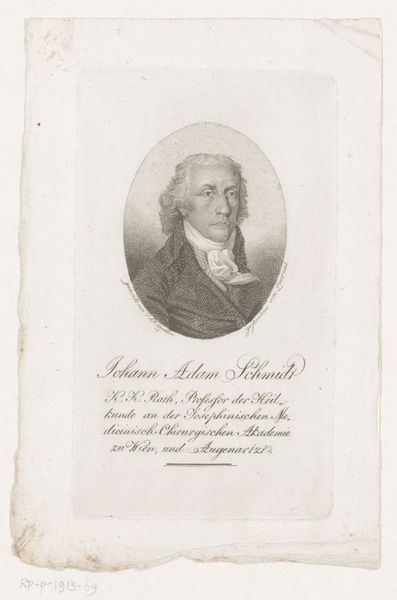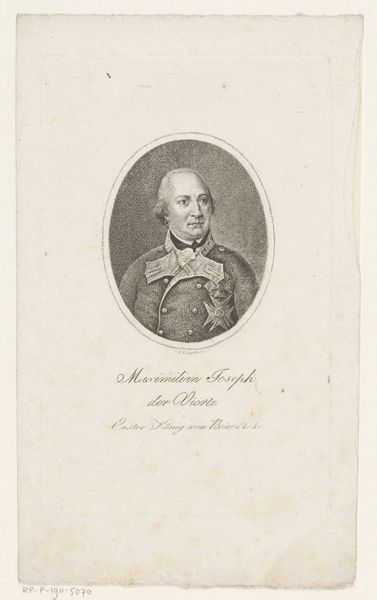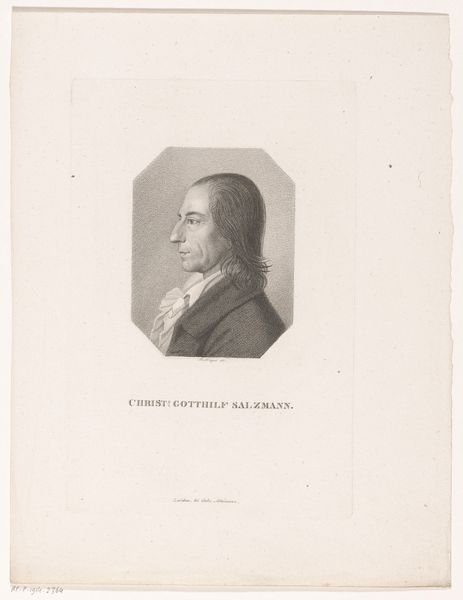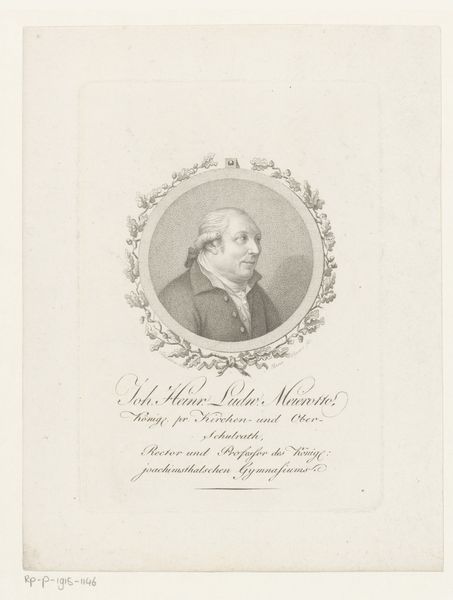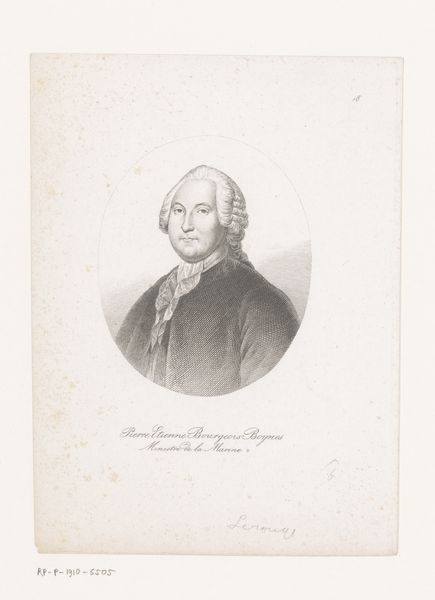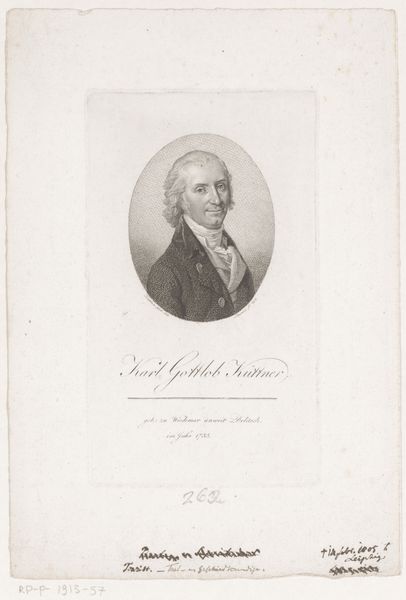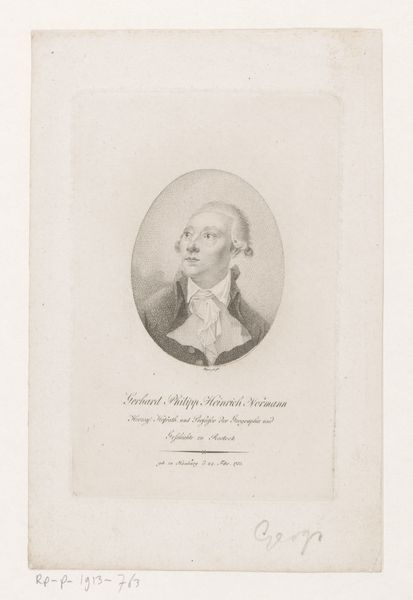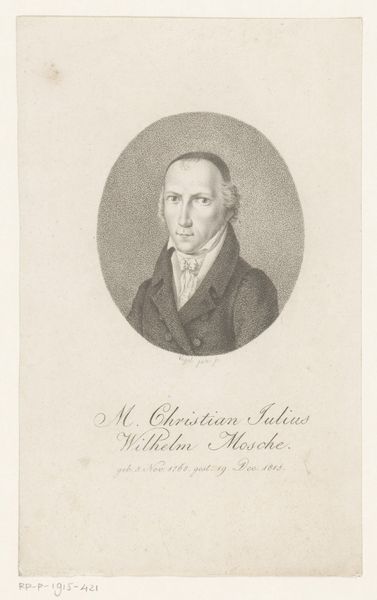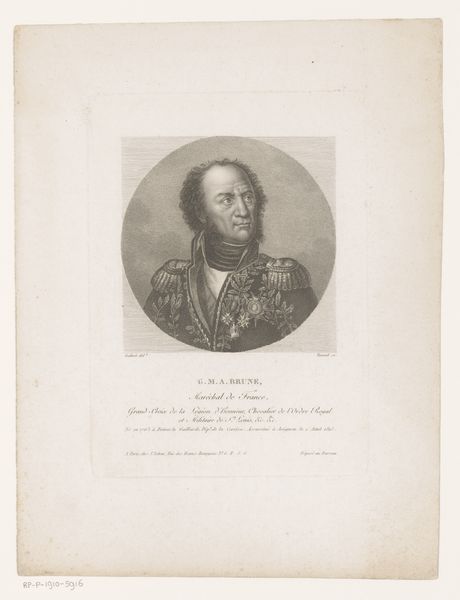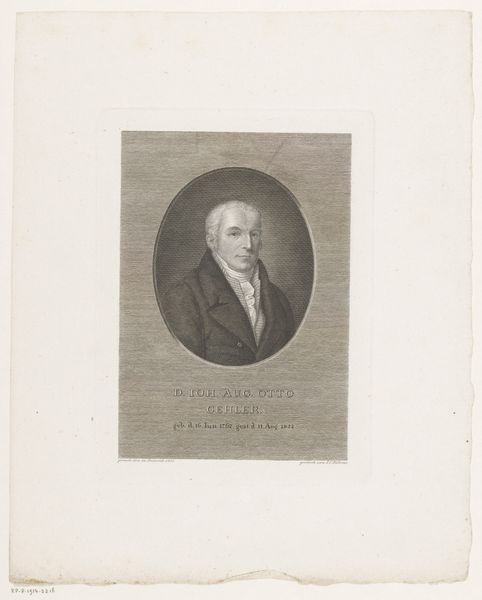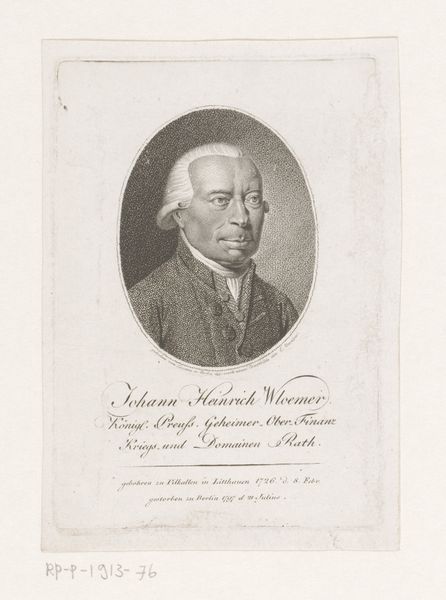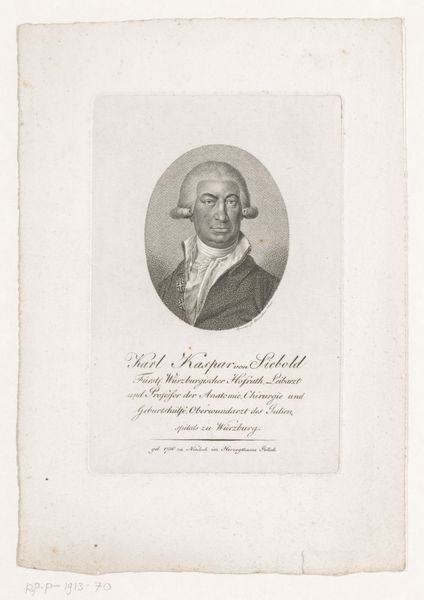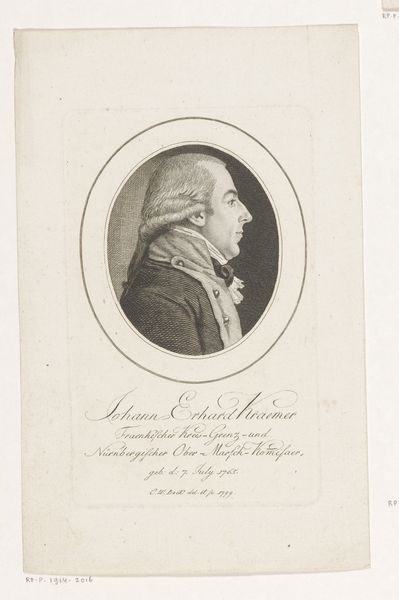
drawing, print, engraving
portrait
drawing
neoclacissism
old engraving style
portrait reference
line
engraving
realism
Dimensions: height 162 mm, width 98 mm
Copyright: Rijks Museum: Open Domain
Curator: Here we have an engraving dating back to 1805. It's a portrait of Johann Heinrich Voss by Johann Daniel Laurenz, Junior. It's done in a very clean, Neoclassical style. Editor: It’s immediately striking how...reserved it feels. The cool tones, the rigid profile, it almost presents Voss as an intellectual statue rather than a person. I'm curious about the deliberate suppression of warmth or individuality. Curator: Well, this type of formal portraiture, especially in engraving, was very much about projecting a certain kind of status and ideal, a public image carefully crafted. Engravings, in particular, allowed for wider dissemination of images and ideas, turning figures like Voss into recognizable intellectual authorities. Editor: And what was Voss’s standing? Who was he in the social context? Curator: He was a prominent German classicist, translator, and poet. Known especially for his translations of Homer. It's worth noting that artists during the Neoclassical period often sought to connect their subjects to classical ideals and aesthetics; Voss would very much be within the world they sort to idealize. Editor: Interesting. The profile view emphasizes the contours of his face, highlighting intellectual characteristics: the high forehead, a strong nose. But what is left out of these sorts of portrayals, in terms of representation? Were there alternative artistic spaces where more marginalized figures could gain visibility during that time? Curator: Certainly. These formal engravings would have circulated in specific social spheres—intellectual circles, academies. Broader, cheaper modes of image reproduction enabled alternative forms of cultural expression among emerging publics. Different identities were validated through a different approach to aesthetics. Editor: Considering that shift of perspective brings out an interesting tension, highlighting not just Voss' individual status, but also the very constructed nature of "greatness" within social hierarchies. This little engraving embodies such complex cultural messaging, it turns out! Curator: Absolutely, art gives us an access point to the conversations, negotiations, and tensions that societies contend with. And how art both reproduces and resists such social impositions. Editor: A powerful, condensed moment that we are left to explore through an image, like an invitation to see things from multiple viewpoints simultaneously.
Comments
No comments
Be the first to comment and join the conversation on the ultimate creative platform.
